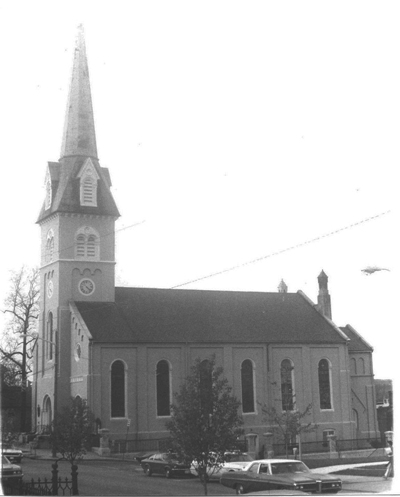The information which is contained here was derived from one congregational meeting and several meetings of the survey committee. These questions were asked of the congregation
What do like about St. George’s Church that ought to continue?
What don’t we like about St. George’s Church that ought to be stopped?
What do we think ought to be started at St. George’s?
The responses to these three questions were divided into five
Categories. Parish life; Christian Education; Outreach-community; Worship liturgy and music; staff and physical plant.
‘Worship, Liturgy and Music” received the largest response and ngntly so for this is the core of our church, our reason for existence.
“Parish Life” was second and again rightly so, because it’s our family relationship, our love for each other, our concern for the church itself.
Third was Christian Education which teaches us to become full participants in our own parish and the Christian world thru the power of the Holy Spirit and the love of God in his Son Jesus Christ.
Fourth in line was Staff and Physical Plant to operate our Christian family home efficiently and attractively to the comfort and betterment of our lives, and a fitting edifice to the glory of God.
Last, but no means least was our “Outreach to the Community,” our purpose- “to know the Christ and make him known.” Our duty as Christians is to be Ministers of God and as Ministers, to go forth and preach the Gospel.
Although our areas of concern have been categorized, the real life of St. George’s is far more intricate and complicated. The following summaries of the aforementioned categories arc the results, as “mentioned before, of one congregational meeting at which only a fraction of the congregation was present. The Survey Committee feels, however, that the entire congregation of St. George s was fairly represented in all factions and age groups.
As a whole St. George’s is a conservative congregation, but willing to make changes with good leadership.
The things which most people liked about the church were the Newsletter, the friendliness, and fellowship and the groups which promote them. Freedom of expression and a cosmopolitan congregation also head appeal.
Many felt a lack of fellowship within the church, other liked its friendliness. A large number felt a lack of communication and a great many felt a need for the formation of interest groups activities to stimulate involvement – especially for the under 40 age group. &
There was criticism about the Sunday School programs for children and adults. Interest was evidenced in adult sessions in the area of theology. Although many liked lay participation in the services, there was a good bit of dissatisfaction, and training for this work was advocated.
Emphasis on evangelism here and throughout the world was felt to be neglected concern. It was evident that our support of the church in the diocese, the nation and the world should be substantially increased.
The average St. Georgian is extremely proud of the effort his church makes in the community affairs and its leadership role in community charitable endeavors and is happy that the church buildings are available for worthwhile projects. He wishes this to continue, but seems reluctant to expand the role because of the cost of utilities.
We are generally satisfied with the time and the type of worship service” While the 1928 Book of Common Prayer was preferred by many, about the same number liked variety in the service.
The music should have mere verve and meaning and a larger choir is needed. The congregation docs not participate enough in the worship service, responses or singing.
The average St. Georgian is proud of both the physical layout and historic significance of his church and likes its Ration, hut the lack of maintenance and housekeeping are deplored. A chapel in the southeast comer of the nave was suggested.
The congregation needs to involve itself in more internal activities which will bring it as a church family closer together and wi meet its corporate and individual and spiritual needs.
Profile for the Rector
Our next rector should be married, under the age* of 40, and a superb preacher who, although moderate, can skillfully introduce variety in the worship service.
In addition he should have strong leadership in the areas of encouraging and securing congregational support in all church activities, but should, share duties with the congregation and vestry.
Possessed of a warm, friendly manner, he should be sincere and compassionate and have a sense of; humor. Crisis visitation is important for him.
He should be strong on Christian education for both children and adults.
As well as having a Master’s degree from the Seminary, it would be an asset if he had some experience in business or education.
Here is the complete profile.
profile1976
